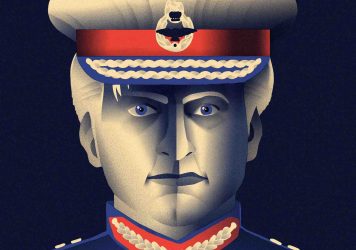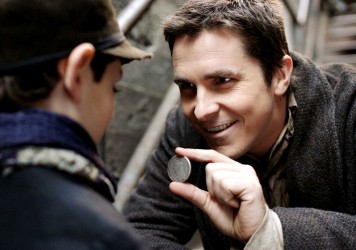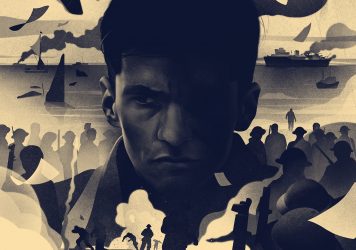How better to celebrate the release of a brand new Christopher Nolan film that to take stock of his breathtaking back catalogue? As we herald the arrival of Dunkirk, we’re thrilled to present a new video essay by Luís Azevedo (aka Beyond the Frame), made exclusively for LWLies, which delves deep into the writer/director’s obsession with and manipulation of time. Here’s a short back-and-forth with Luís about how he became a video essayist and how he went about attacking Nolan’s daunting body of work.
LWLies: How did you first get it to the world of video essays?
Azevedo: I’ve been a film enthusiast since very early on. My cinephile diet consisted mostly of Rocky movies, the Karate Kid series and the Van Damme/Jackie Chan classics. Anything with punching and kicking, really. Along the way, I started picking up issues of the Portuguese version of Premiere, developing my taste as I read more, and found different film fodder to watch. Discovering the writing of Roger Ebert was a cornerstone, as it is for so many film lovers. It got me interested in reading film criticism and, eventually, creating it.
Read more about Christopher Nolan in our latest print edition
Get the magThe next logical step was to study film. I was told it was too hard to make a living with a film degree, so I compromised and opted for a stable and prosperous booming field: journalism. I finished a bachelor’s in UTAD (Universidade de Trás-os-Montes e Alto Douro), after interning on the set of a small film. My expertise led me to a year making coffee in the UK. I returned to Portugal for a new degree, now in film, putting down the milk jug and picking up the pen again.
When did you start Beyond the Frame and what was the first essay you did?
In my first year at UBI (Universidade da Beira Interior) I learned about video essays through Paulo Cunha, a professor that who guided me through my thesis. He introduced the class to the works of Kevin B Lee, Tony Zhou, ::kogonada and Catherine Grant. I was hooked. I still find myself taking notes of older Kevin B. Lee works and discovering exciting video essays by newcomers, or veterans like Leigh Singer.
For class, we were told to create a video essay that explored the relationship between cinema and other arts. I looked into Wes Anderson’s relationship with literature. Despite an utter lack of knowledge about montage theory or editing programs, I proceeded to place bits and pieces of footage where they didn’t belong, creating new meanings by manipulating their placement, speed or framing. The work quickly became exhilarating. It culminated in the first video essay I published on Beyond the Frame.
With varying regularity, I continued to create video essays while studying them for my thesis. After turning in those 70 pages, I spent a week maniacally editing a supercut that looked at Tarantino’s characters and placed them within the same universe. Soon after, I spent almost two months studying Wes and Roy Anders(s)on and connecting them, but in a different manner.
How did you approach this new film?
It was that work on the Anders(s)sons that connected me with LWLies and now here I am, writing about myself and Christopher Nolan’s Time Puzzle. The initial goal for this essay was to find a meaningful connection between Nolan’s films and to get closer to the core of his filmmaking. It was the way Nolan plays with time that piqued my interested.
Watching the films all over again, I found the accusations of a perceived lack of emotion in his films, now making headlines, to be baseless. At the centre of his characters, there’s a strong relation with the past and its inhabitants. It was that relationship, of past moments and time breaking, that we decided to explore.
Three wives fall to their deaths in The Prestige and Inception, and Cooper falls into a timeless dimension in Interstellar. In the editing, I placed these shots together to show how Nolan continuously returns to the same themes and motifs. As I explored the narrative manipulation of time, I tried to repeatedly connect these moments to create a work that not only reflects Nolan’s obsessions, but reinforces them through juxtaposition.
Stylistically, I also tried to recreate some of Nolan’s choices in the editing. I played around with the wonderful music by Kevin MacLeod to set the tempo and tone of video, with the films’ sound design as their compliment.
Find more videos by Luís at Beyond the Frame here, and follow him on Twitter.
Published 17 Jul 2017

The Dunkirk director reveals the challenges of transforming documented reality into an experience fit for the multiplex.

Never has on-screen magic been so compelling as in the director’s now 10-year-old passion project.

Life’s a beach as we take a deep dive into Christopher Nolan’s wartime suspense saga.